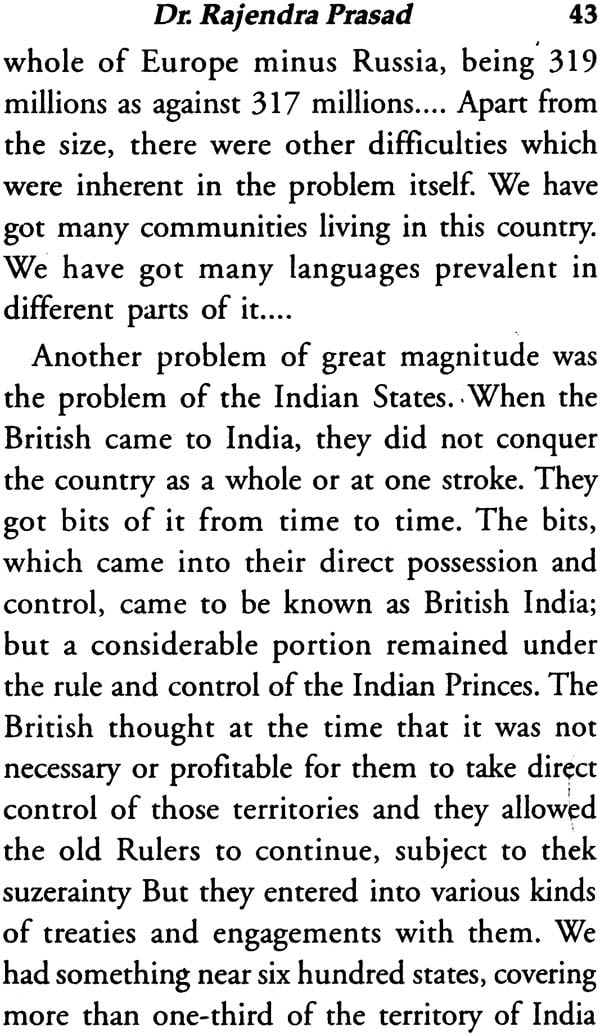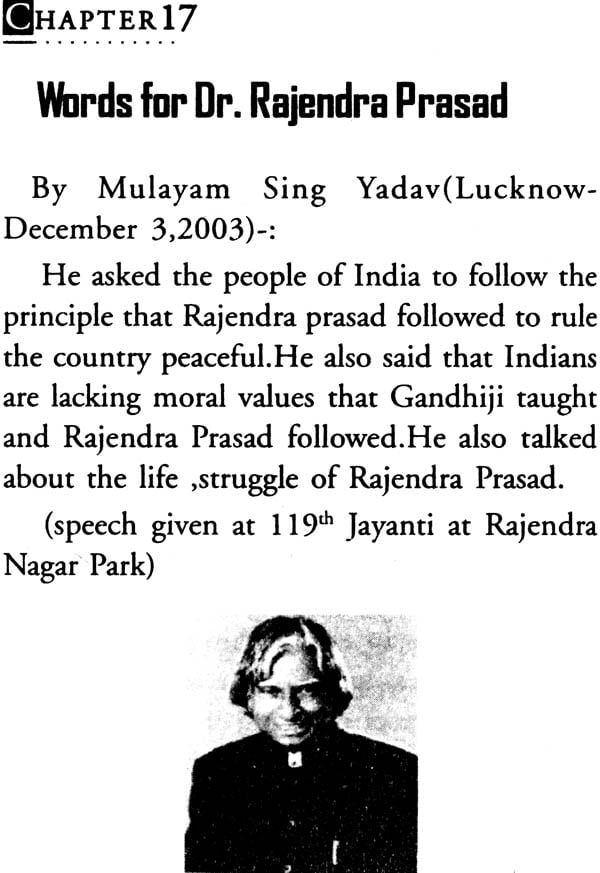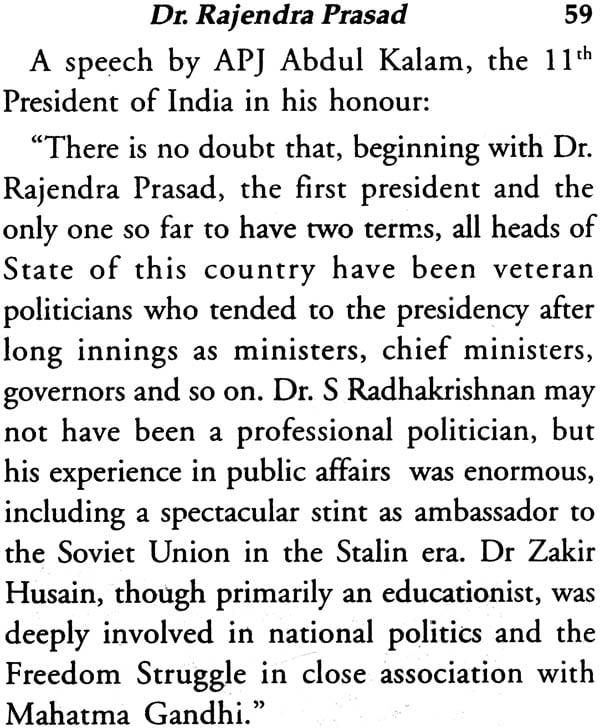
Know About Dr. Rajendra Prasad
Book Specification
| Item Code: | NAL833 |
| Publisher: | Maple Press Pvt. Ltd. |
| Language: | English |
| ISBN: | 9789350334072 |
| Pages: | 72 (14 B/W Illustration) |
| Cover: | Paperback |
| Other Details | 7.0 inch X 4.5 inch |
| Weight | 60 gm |
Book Description
This book is biography of Dr. Rajendra Prasad, the first president of India. He was born in Zeradei, Bihar an December 3, 1884. In Zeradei’s diverse population lived together in considerable harmony. Rajendra Prasad’s earliest memories were of playing ‘kabaddi’with his Hindu and Muslim friends alike.
Before entering politics, he taught English literature, history, economics and law. In 1917, he began working with Mohandas K. Gandhi and in 1920, he joined the Indian Congress and was several times (1934, 1939, 1947-48) its president. He was imprisoned (1942-45) for supporting the congress opposition to the British war effort in World War II. Prasad became the president of India in 1950 and held that office until 1962.
As President, he exercised his moderating influence. On February 28, 1963, he passed away.
This book is an attempt to shed some light on the life of this great personality.
Dr. Rajendra Prasad was the son Mahadev Sahai and was born on 3 December 1884, in an unknown village in the Saran district of North Bihar, Zeradei. Being the youngest in a large joint family, ‘Rajen’ was loved a lot. He was attached to his mother elder brother, Mahendra. Following the old customs of his village and family, Rajen was married when he was 12 years old, to Rajvanshi Devi.
Rajendra Prasad’s great uncle, Chaudhur Lal looked after the family, a Zamindari income of Rs.7, 000 per year and big farmlands. He was the Deewan of the Hathwa Raj and was respected by all, honest, loyal and able persons. Rajendra Prasad’s father, Mahadev Sahai, was a gentleman, a scholar of Persian and Sanskrit. His hobbies were wrestling, gardening and also providing free Ayurvedic and Unani treatment to Patients who came to him. Rajendra Prasad’s mother, Kamleshwari Devi, was a religious lady who never gave up her evening bath and puja even though she was suffering from cough. Everyday she would tell stories from the Ramayana to young Rajendra, as he slept close to her waiting for the morning light to peep into the windowless bedroom of their old-fashioned house. The Ramayana by Tulsidas became his true friend he also loved to look at the Upanishads and other religious books.
The family avoids show off, lived simply and mixed freely with the co-villagers. There was a sense of community, fellow-feeling and kindness. All enjoyed festivals and the Pujas together. The flow of left a deep mark on young Rajendra’s mind. The village stand for peace and rest.
At the age five, young Rajendra according to the practice of the community was put under a Maulavi, who taught him Persian. Later, he was taught Hindi and Arithmetic. After the completion of this traditional education, he was put in the Chapra Zilla School and from which he moved to R.K. Ghosh’s Academy in Patna in order to live with his only brother Mahendra Prasad, who was eight years older than him and who had joined the Patna College. When Mahendra Prasad moved to Calcutta in 1897, Rajendra was admitted into the Hathwa High School. Soon, he rejoined the Chapra Zilla School, from where he passed the Entrance Examination of the Calcutta University at the age of eighteen, in 1902. Rajen was a brilliant student and stood first in the entrance examination of the University of Calcutta and was awarded a scholarship of Rs. 30 per month. He joined the famous Calcutta Presidency Collage in 1902. Gopal krishna Gokhale started the Servants of India Society in 1905 and asked Rajen to join. But his duty towards his family and education was very high and so he refused Gokhale. But, this brought a sad change in him and for the first time in life his academic performance went down.
After making his own choice, he kept the thoughts away and took studies seriously. In 1915, Rajen passed the Masters in Law examination with honours, winning a gold medal. Later on he completed his Doctorate in Law as well.
| 1 | Introduction Childhood ande ducation | 5 |
| 2 | His Meeting with Mahatma Gandhi | 9 |
| 3 | Freedom fighter | 12 |
| 4 | His Qualities | 16 |
| 5 | Becoming the Congress President | 19 |
| 6 | Becoming the First President of India | 21 |
| 7 | The Later Years of his Life | 24 |
| 8 | The Constitution of India | 27 |
| 9 | The Darbar | 31 |
| 10 | Election of the First President of India | 34 |
| 11 | The Ceremonial Procession | 37 |
| 12 | The Salient Features of the Constitution | 40 |
| 13 | Rejendra Prasad's Speech | 42 |
| 14 | His Respect for the Father of the Ration | 48 |
| 15 | His view on India at the Time of Independence | 52 |
| 16 | His Thoughts on Freedom | 55 |
| 17 | Words for Dr. Rajendra Prasad | 58 |
| 18 | Birth of National Flag | 60 |
| 19 | The Indian Legislature | 66 |
| 20 | The President House | 70 |
| 21 | Some Quotes on Dr. Rajendra Prasad | 72 |









